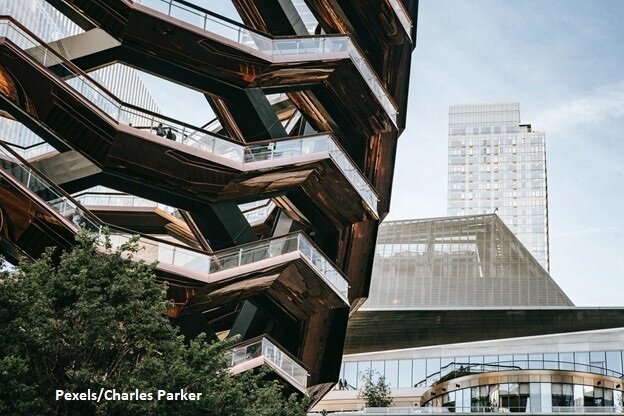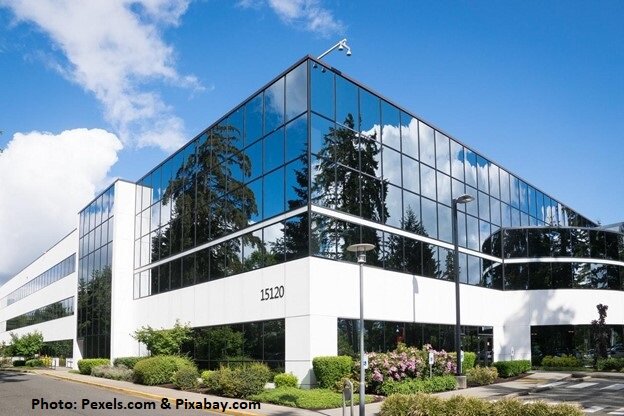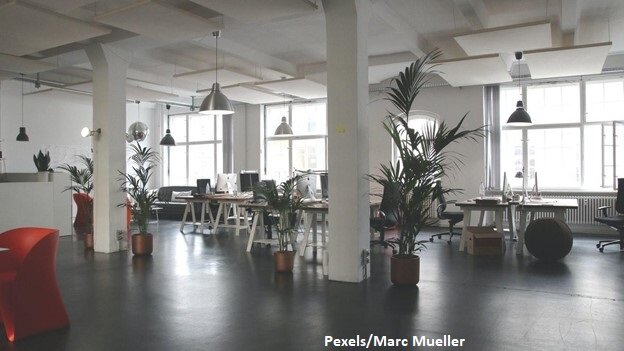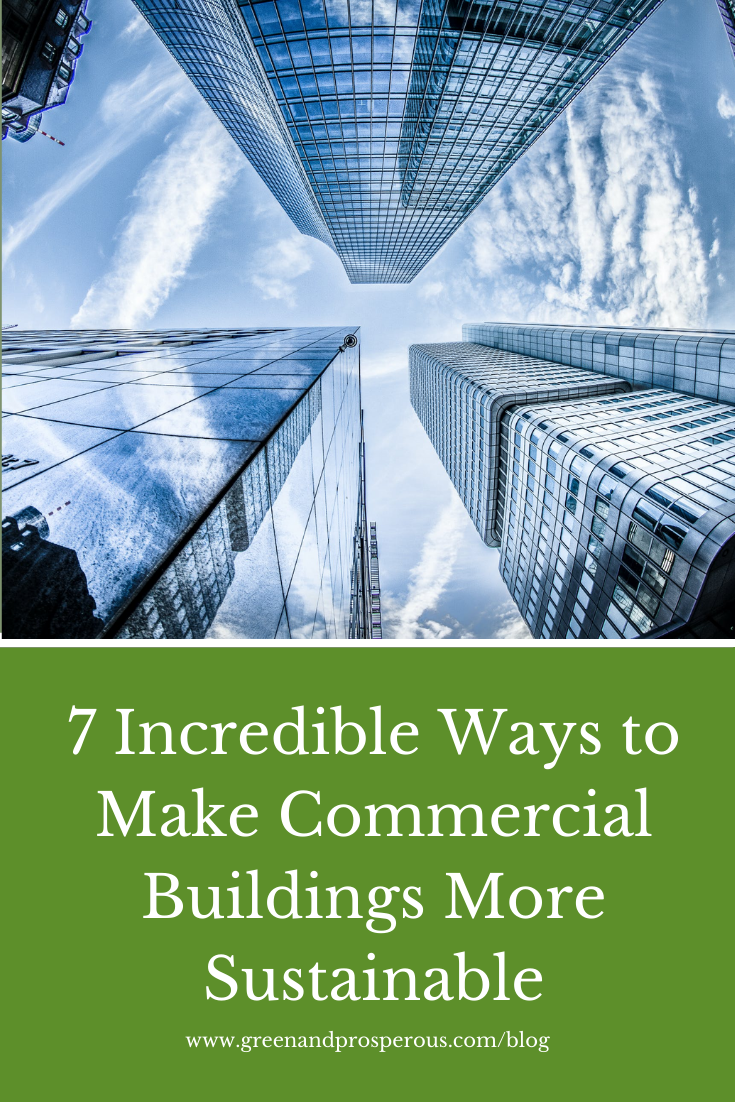7 Incredible Ways to Make Commercial Buildings More Sustainable
/Due to their size and use, commercial buildings were traditionally not very green. However, times are changing, and so is the commercial building industry. Today these buildings, no matter their purpose, can become more environmentally friendly than ever. If you’re trying to reach eco-friendliness with your commercial building, it’s important to know all the steps you need to take. In this post you’ll read about just a few of the ways that commercial buildings can become more sustainable.
Use of innovative materials
To reduce the impact of a commercial build, architects and engineers have to adopt natural and sustainable materials that meet stringent criteria. These materials need to impact the structure’s energy efficiency significantly by creating a tight envelope that offers element protection and expenditure reduction. Here’s an example—Pacific Bio-Foam. This material shows great promise for the future of the eco-friendly building. Made of plant-based polyurethane, this rigid foam is a great insulator that’s far less harmful to nature that conventional materials. There are many more materials like this that have a promising career in commercial construction.
Employment of passive design
Passive design “takes advantage of the climate to maintain a comfortable temperature range in the building”. Passive solar building design uses the sun and wind as important elements in the building’s functionality, including heating, cooling and lighting. Architects who want to consider passive solar design need to pay attention to the building’s location, orientation, size, windows and walls that surround the building. In certain climates, passive design reduces the need for heating or cooling, which usually accounts for about 40% of total energy use in the average western-type building.
The best time to invest in passive design is during the process of designing and building an establishment, but with substantial renovations to an existing building, one can also upgrade thermal comfort and reduce energy requirements.
Application of architectural films
By applying a thin architectural film, one can reduce a company’s heating and cooling needs considerably. This film is applied to windows and it can keep a significant percentage of heat from entering a building, enabling a building to maintain its interior temperature. There are other benefits to architectural film, though. This solution can also deflect UV rays, which damage the furniture and flooring in an environment, and reduce the building’s need to invest in new materials that contribute to CO2 emissions.
There’s another solution to temperature maintenance called “electrochromic glass”. This smart glass uses electricity to turn the glass properties from translucent to opaque with quick, low volts of electricity. To turn the glass from opaque to translucent or vice versa, one only needs to reverse the charge. This solution saves energy, reduces the load on the property’s HVAC system, provides natural lighting and eliminates the need for shade.
Investment in modular construction
It is a well-known fact that traditional construction produces a lot of waste—it’s a process that requires a lot of energy without too much efficiency, which boosts the production of industrial waste and CO2 emission. Luckily, with modular construction on the rise, builders can have more control over the construction process. For instance, precast concrete can be made in a factory setting, producing very little waste and almost no negative effect on the environment. Also, it can be made from recycled concrete and other materials, which allows the reduction of demolition waste.
In many cases, entire buildings or building wings can be prefabricated to reduce the stress on construction sites. For instance, when making modular classrooms, virtually any size permanent school can be designed, built, installed and ready for use in 90 days or a little more. The materials used in these modular units are created in a safe and controlled environment, and since builders can cut back on time, the project’s environmental impact is reduced.
Transition to renewable energy
Every commercial building needs electricity to operate. With that in mind, businesses no longer have to depend entirely on the grid—they can make a transition from fossil fuels to renewable energy sources just by updating their infrastructure. For example, there are efficient and affordable solar panels. Solar energy is green and cost-effective, and it can reduce a company’s CO2 emission and energy costs. In some countries, if a building collects enough energy, it can even sell it back to the provider and make a profit.
Investing in innovative heating and cooling
The biggest energy user in any commercial building is the HVAC system, while air conditioning produces a ton of CO2 emission. The overall energy consumption can be lowered by 10% if the management just turns down heating and cooling when the workers are not present. However, there are also other ways to reduce heating and cooling waste. Alternative HVAC systems like chiller boiler systems, which use water instead of air to heat and cool, are more efficient because they provide even temperatures by employing radiant heat. These systems are easy to install and can simply be attached to the building’s water supply.
Inclusion of green roofs and walls
Landscaping is nothing new to commercial real estate, but so-called “vertical gardens” and “green roofs” are. Vertical gardens allow a building to boost its positive environmental impact. These gardens are installed on the outside of the building’s envelope and provide insulation, as well as reduce heating and cooling costs. Living walls improve a building’s sustainability by reflecting solar radiation, absorbing rainwater and improving air quality (plants absorb CO2 and release oxygen).
In many cases, living walls can also be used inside the building and offices. While these solutions don’t provide the same benefits as outdoor living walls, they help by purifying air and recycling water. These walls also have a very trendy look that’s proven to improve employee mood and satisfaction.
Final thoughts
Our journey to sustainability starts with improved building practices and moving toward green and sustainable alternative building methods. With new materials, architectural films and similar solutions, commercial buildings can reduce their negative impact and contribute to a greener future.
But becoming a green society is a shared responsibility. The public needs to show an interest to invest in green commercial properties. As long as we all do our part, we can live in harmony with nature and enjoy this green planet for generations.
Chloe Taylor is a graduated journalist from Adelaide who loves exploring everything related to decor, aesthetic and organizing. She is also very passionate about sustainability and enjoys writing about it. Her biggest dream is to travel the whole world and take some stunning photographs of beautiful places. Besides all this, she enjoys drinking coffee and reading a beautiful book from time to time
Like this? Please pin!










































